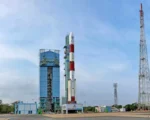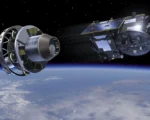Why It Costs India So Little to Reach the Moon and Mars

India has recently allocated a record 227 billion rupees ($2.7 billion; £2.1 billion) for an array of ambitious space projects, which include advancing its Moon mission, sending an orbiter to Venus, establishing the first phase of a space station, and developing a new reusable heavy-lifting rocket. Despite this being the largest funding for space endeavors in India’s history, the costs of these projects remain remarkably low compared to international counterparts, raising questions about the efficiency of India’s space program.
Experts globally have noted the cost-effectiveness of the Indian Space Research Organisation’s (ISRO) missions. For instance, India spent $74 million on the Mars orbiter, Mangalyaan, and $75 million on last year’s Chandrayaan-3 mission, significantly lower than the $100 million budget for the Hollywood film Gravity. In comparison, NASA’s MAVEN orbiter cost $582 million, and Russia’s Luna-25 mission, which unfortunately crashed before Chandrayaan-3’s landing, had a budget of 12.6 billion roubles ($133 million).
Despite operating on a modest budget, Indian scientists are making substantial contributions to space research. Chandrayaan-1 was the first mission to confirm water presence on the Moon, while Mangalyaan provided critical data on methane in Mars’ atmosphere. The images and data sent back by Chandrayaan-3 have garnered worldwide interest among space enthusiasts.
So, what allows India to maintain such low costs?
According to Sisir Kumar Das, a retired civil servant who managed ISRO’s finances for over two decades, the frugality of India’s space program dates back to its inception in the 1960s. At that time, ISRO’s founder, Vikram Sarabhai, had to convince the government that a space program could serve practical purposes in a newly independent and resource-strapped country. Sarabhai emphasized that satellites could help improve the lives of citizens, justifying the investment in space exploration.
ISRO has consistently operated under tight budgets, shaped by the country’s competing priorities. Historical photographs depict scientists transporting rockets and satellites using bicycles or bullock carts, reflecting their resourcefulness. Currently, ISRO’s budget is approximately 130 billion rupees ($1.55 billion), in stark contrast to NASA’s annual budget of $25 billion.
A critical factor in ISRO’s low-cost operations is its commitment to developing homegrown technology. Following India’s first nuclear test in 1974, which prompted Western nations to impose technology transfer restrictions, ISRO saw this as an opportunity to foster domestic technological advancements. Consequently, all required equipment is manufactured in India, benefiting from significantly lower labor costs compared to the U.S. or Europe.
Science writer Pallava Bagla explains that while ISRO handles satellite manufacturing internally, NASA outsources much of this work to private companies and incurs additional costs through insurance. Furthermore, ISRO typically forgoes extensive engineering models used for testing before launches, opting instead to create a single model meant for flight. This approach carries inherent risks but allows for cost savings due to the nature of government funding.
Mylswamy Annadurai, who led India’s first two Moon missions and the Mars mission, notes that ISRO operates with smaller teams and lower salaries, making projects more competitive. Often, team members work extended hours out of passion for their work without additional compensation. The tight budget constraints often push scientists to innovate and find efficient solutions.
For instance, during Chandrayaan-1, budget constraints prompted scientists to reduce the spacecraft’s thrusters from 16 to 8 and streamline other components, which resulted in maintaining a strict launch schedule to avoid solar eclipses that could affect power supply.
The low cost of Mangalyaan was partly due to using hardware designed for Chandrayaan-2, which faced delays. This reuse of components is indicative of ISRO’s resourcefulness.
Despite ISRO’s impressive achievements at minimal costs, Bagla warns that as India expands its space ambitions, expenses are likely to rise. The current reliance on smaller rocket launchers means longer travel times for spacecraft. For example, Chandrayaan-3 orbited Earth multiple times before reaching the Moon, while Russia’s Luna-25 utilized a powerful Soyuz rocket for a quicker trajectory.
Looking forward, India has announced plans for a manned Moon mission by 2040, necessitating a more powerful rocket for faster travel. The government has already approved work on a new Next Generation Launch Vehicle (NGLV), expected to be ready by 2032, which will enhance payload capacity but also increase costs. Additionally, the opening of the space sector to private players is likely to drive expenses higher, potentially altering the cost-effectiveness that has characterized India’s space program.





















